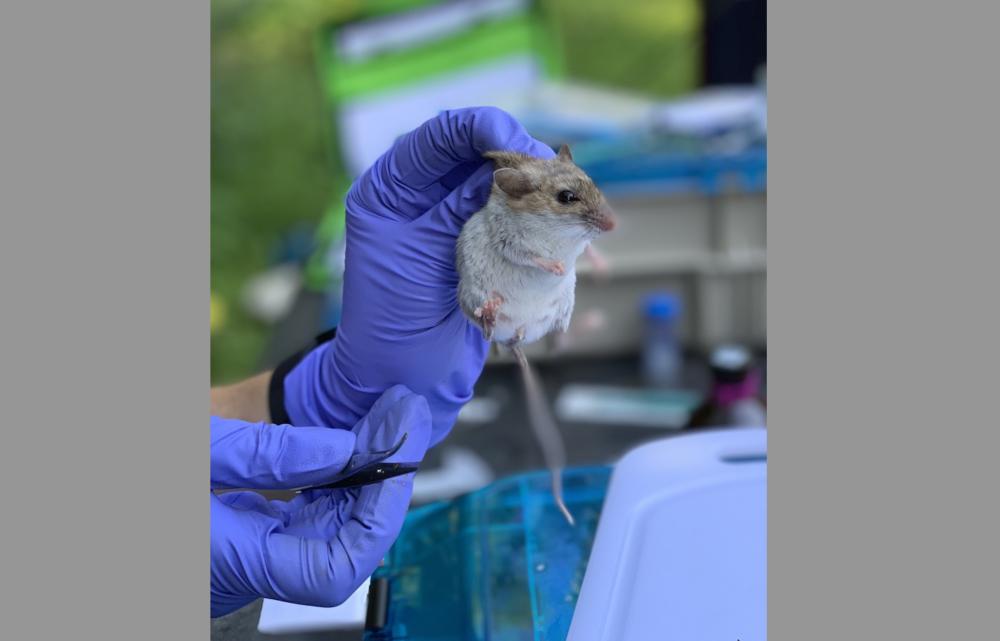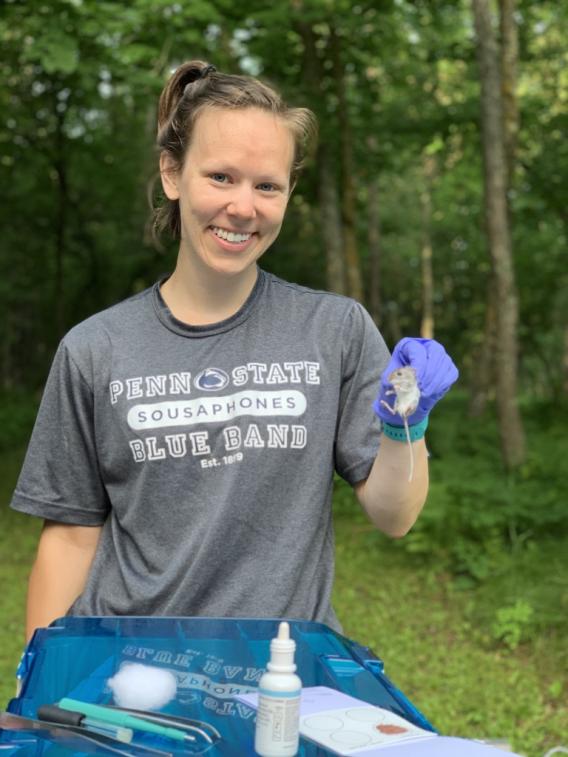Mice among men
April 1, 2024

Photo by Meggan Craft
New research from the University of Minnesota College of Veterinary Medicine (CVM) found that rodents living in developed agricultural areas may be more likely to carry pathogenic bacteria compared to those living in undeveloped forest.
Wild animals are a huge source of disease in humans. Scientists estimate that about 75 percent of new and emerging infectious diseases are zoonotic, meaning they can spread between people and animals.
Since the start of the COVID-19 pandemic, researchers around the world have focused on studying one reservoir in particular: bats. The new CVM study sought to better understand the pathogens living in a much more common reservoir, and one that’s very adept at living in human spaces.
“There are more rodent species than there are bats, and there are a larger number of rodent species that are known to harbor zoonotic pathogens,” said Janine Mistrick, a current postdoc in the Department of Veterinary and Biomedical Sciences at CVM, who led the research.
Humans can also pass bacteria to rodents, where the pathogens can mutate and then move back into humans.
“Mice carry hantavirus and a lot of tick borne bacteria are known to replicate well in rodents,” said Peter Larsen, assistant professor in the CVM Department of Veterinary and Biomedical Sciences and co-director of the Minnesota Center for Prion Research and Outreach (MNPRO). “And one rodent can shed millions of Salmonella into the environment in 24 hours.”

Larsen, Mistrick, and their team used a targeted genetic sequencing technique to analyze both the gut microbiome and the zoonotic bacteria present in wild mice that lived either on undeveloped forest land or in forested areas surrounded by farmland in Minnesota. Using amplicon sequencing, an extremely targeted method that allows researchers to identify genetic variation in specific parts of a genome, the team read long chains of bacterial DNA from 140 fecal samples. Using this approach, they were able to identify exactly which species of bacteria each mouse harbored, rather than the presence of bacteria in general.
The human microbiome has been widely studied, but what microbes live in the guts of animals remains largely a mystery. While bacterial pathogens were more likely to be found in mice from the agricultural areas, the team was surprised to find that the types of pathogens identified in all the samples, regardless of where the mice lived, were generally the same.
The study showed that moving forward, amplicon sequencing can be used to monitor potential food-borne and zoonotic bacteria in wild rodent populations, especially if those mice share spaces with humans.
“They are a major reservoir,” Larsen said. “We may not see them but we are crossing paths frequently.”
Read the full study in Molecular Ecology.


